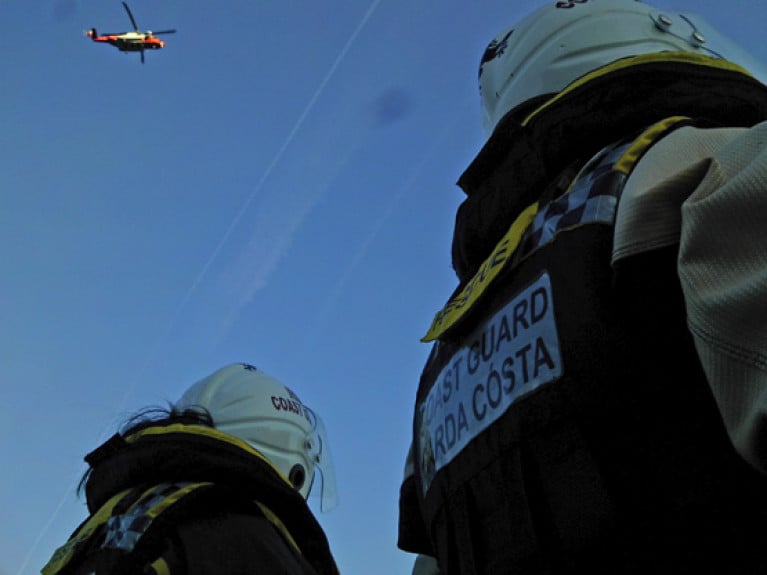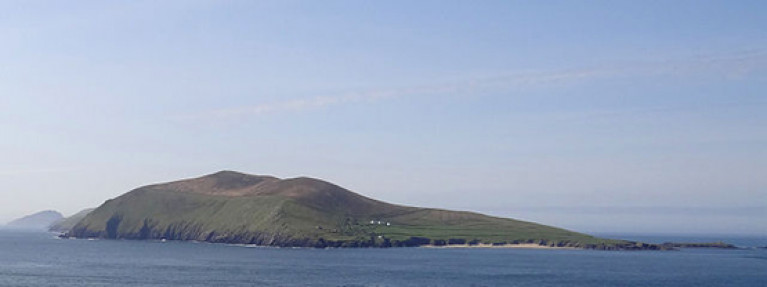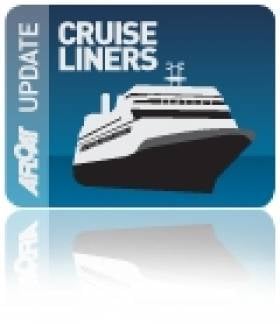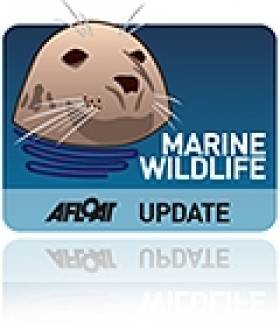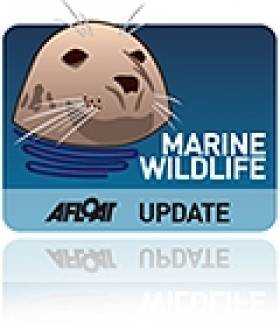Displaying items by tag: Dingle Peninsula
Humpback Whales In ’Feeding Frenzy’ Off Dingle Peninsula
Whale watchers off the Kerry coast have been gifted a treat with a “feeding frenzy” of humpback whales near the Dingle Peninsula, as RTÉ News reports.
As many as 12 of the marine wildlife giants have spent more than a week chasing sprat shoals even in inshore waters — providing a rare opportunity to see them from land.
And the number includes the latest addition to the Irish Whale and Dolphin Group’s records: a juvenile that’s the 107th individual humpback in Irish books since 1999.
But the approach of Storm Ellen later today (Wednesday 19 August) means any prospective whale spotters will have to put off their plans as Status Red conditions loom.
An 11-year-old boy is believed to have sustained a broken leg when he and a friend fell from a sea cliff in North Co Dublin yesterday (Tuesday 23 June).
As Independent.ie reports, Irish Coast Guard rescue teams from Howth and Skerries were tasked to the scene by the Martello tower at Drumanagh in Rush as was the SAR helicopter Rescue 116.
A spokesperson for Dublin Coast Guard said one boy sustained a head injury but was “walking wounded”, while the other had a suspected broken femur and was winched to the care of ambulance staff for transfer to hospital.
"They were very lucky not to be more seriously injured," the spokesperson said.
Elsewhere, the search is ongoing for a man missing on the Dingle Peninsula in Co Kerry, as RTÉ News reports.
John Cunningham (53) was last seen early on Saturday, 20 June, and locals believe he may have got into difficulty while retrieving lobster pots from an inlet on Dún Mór Head in stormy seas.
‘Cull Not The Answer’ Says Seal Sanctuary As Fishermen Renew Call
The Irish Seal Sanctuary has said a seal cull is not the answer to the woes of Dingle Peninsula fishermen, who claim a booming population of the protected marine wildlife is putting their livelihood at risk.
Sanctuary co-founder Brendan Price told RTÉ News that “you’re essentially wasting a bullet, it’s futile” as “an apex predator such as a seal is controlled by the available food source”.
Late last year, inshore fishermen who work around the Blaskets, which is a Special Area of Conservation, blamed the local seal colonies for depleted fish stocks and damage to their nets, arguing the situation was “unsustainable”.
Now the fishermen say they are “at breaking point”, with one claiming that seals actively follow their boats to target their catch.
RTÉ News has more on the story HERE.
#WestIslandsCruising - Two former Norwegian 'Hurtigruten' Coastal Express Voyage ships today visited the west coasts of Ireland and the UK, where passengers on board experienced totally contrasting scenery, writes Jehan Ashmore.
Anchored off the Dingle Peninula Co. Kerry this evening is National Geographic / Lindblad Expedition cruises small ship National Geographic Explorer (1982/6,471grt) which arrived from the Isles of Scilly.
The former Lyngen which took on other names since becoming a full-time cruise ship is understood to be calling next to the stunning Skelligs that pierce out of the Atlantic.
Having boarded the 'Explorer' during an anchorage call off Inishmore, Aran Islands in 2008, the on board library been of National Geographic Magazine fame was not surprisingly well-stocked!
While making this ship visit, it was particularly noted how rebuilt the former Norwegian coastal cargo-car-carrying ferry/cruise ship had undergone conversion. The ship prior to then had served the routine Bergen-Kirkenes circuit.
The work involved a new extended aft gym structure on the top-deck. Also the fitting of a stability ducktail sponson at the stern which dipped up and down in the swell offshore of the island's Kilronan Harbour.
A Hurtigruten vessel that is currently in the fleet, Fram (2007/11.647grt) which unlike her counterparts is designed primarily as a polar expedition cruiseship was in nearby waters of the Natiional Geographic Explorer. As the 418 passenger vessel had anchored in Galway Bay off the city at the end of last month.
As for the second former Hurtigruten ship, Serenissima (1960/2,598grt) which today visited the Scilly Isles, the low-lying archipelago off the Cornish coast. This former fjord fleetmate was the Harald Jarl that in her current role had anchored off St. Mary's the main island. It is also understood she is to be making a next port of call across the English Channel to St. Peter Port, Guernsey.
Serenissima was particularly smart (see photo) when within Dun Laoghaire Harbour in 2013 and year one after the revived cruise business began. She berthed at the Carlisle Pier while on the same day of Serenissima Cruises port call in stark contrast the giant Cunard flagship liner, Queen Mary 2 anchored on her maiden call off the south Dublin Bay harbour.
This evening Royal Princess which called to Cobh is underway. It will be the turn of the Princess Cruises 3,600 passenger caller as previously reported to make her maiden visit off Dun Laoghaire Harbour in the morning.
Tragedy As Nuns Drown At Kerry Beach
#Drowning - Tributes have been paid to two nuns who died after getting into difficulty at Inch Beach on the Dingle Peninsula yesterday (Thursday 14 August).
Sr Paula Buckley and Sr Imelda Carew, both from Dublin, were two of three Presentation sisters who were holidaying on the peninsula when tragedy struck yesterday evening.
It is as yet unclear what happened, according to The Irish Times, which says the women were close to the shore and standing in shallow water in calm conditions when they were last seen by their companion from the beach.
Dingle gardaí have confirmed they are investigating the women's "sudden deaths". The Irish Times has more on the story HERE.
Sperm Whale Carcass Rots On Dingle Peninsula Beach
#MarineWildlife - The carcass of a 30-metre sperm whale that washed ashore on the Dingle Peninsula last week is still lying on the beach, the Irish Examiner reported yesterday.
The body of the giant cetacean, which is believed to have died at sea, washed up at Fermoyle near Castlegregory, and has been inspected by staff from Kerry County Council.
It's hoped that the tide will rise high enough to carry the rotting carcass back to sea, but if necessary the council said it would take measures to remove it - particularly with the start of the Easter break this week.
Sperm whales - as seen recently by 'Cetaeans on the Frontier' surveyors on the edge of the continental shelf - are an unusual occurrence on Ireland's southwest coast, which normally plays host to humpback, minke and pilot whales, the latter of which commonly strand on the coasts of Cork and Kerry.
Elsewhere in the Kingdom, as reported earlier today on Afloat.ie, Fenit RNLI were joined by three local families to help give a fighting chance to a dolphin that stranded on a remote beach on Fenit Island last night.
Three Seals Set For Release This Weekend
The Irish Seal Sanctuary (ISS) is gearing up for three seal releases this coming weekend.
On Saturday 5 February ISS volunteers in tandem with the Dingle Wildlife and Seal Sanctuary will release Rupert and Rosie back into the wild at Beal Ban Beach in Ballyferriter, Co Kerry.
The two grey seal pups were rescued from the Dun Chaoin area last November within days of each other, the male pup with several injuries. Both now rehabilitated, it's expected they will rejoin the grey seal colony just off the Dingle Peninsula.
Then on Sunday 6 February the ISS will release another grey seal pup, Mary, from Kilpatrick Beach in Castletown, Co Wexford.
For more details on these releases visit www.irishsealsanctuary.ie
Clare Kitesurfer Stars at Rhinos Wave Charge
Mark Barry was the standout kitesurfer at the final stage of the 2010 Rhinos Wave Charge in Brandon Bay recently. SEE VIDEO BELOW
Surfer Today reports that the Co Clare rider outshone the competition on an exceptionally cold weekend that saw three inches of snowfall to take the rider of the year title and the prize of a 6'2" Underground Puhuto board and Ozone surf products.
See below for exciting video of the weekend's kitesurfing action.




























